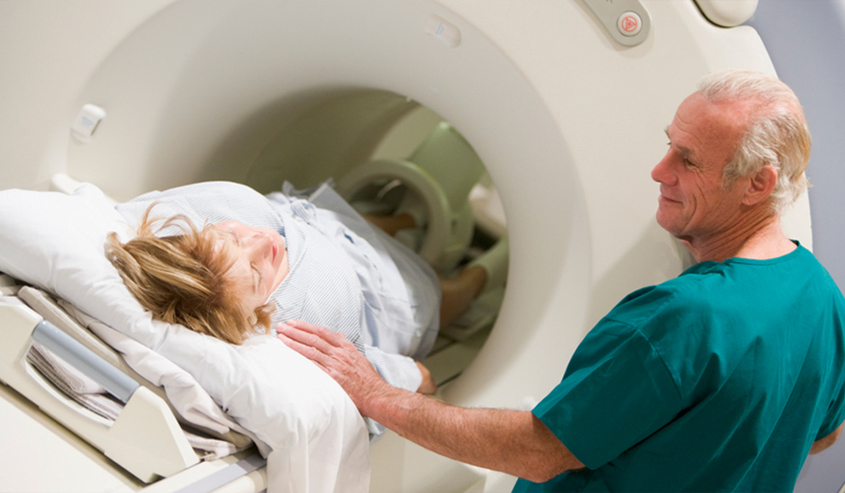
An MRA, or magnetic resonance angiography, is a painless, noninvasive newer technology in magnetic resonance imaging. An MRA procedure utilizes a combination of radio waves and a magnetic field to produce three-dimensional images of blood vessels. There are no incisions or arterial catheters required in this procedure.
Whereas an MRI is typically used to see soft tissues in the body, an MRA specifically targets veins and arteries. This enables your doctor to observe blood flow and detect possible diseased and inhibited vessels in the:
- Brain
- Neck
- Heart
- Chest
- Abdomen
- Pelvis
- Legs and feet
- Arms and hands
An MRA may be performed in conjunction with an MRI in order to obtain a more complete understanding of the blood vessels.
When Will a Doctor Call For an MRA?
Because an MRA can evaluate most major arteries in the body, it enables a doctor to diagnose disease in these vessels and to determine the best course of action in treating them. These include
- Detection of abnormalities such as aneurysms
- Detection of atherosclerotic disease in the carotid artery
- Detection of arteriovenous malformation — abnormal connections between blood vessels
- Detection of plaque disease in the legs
- Preparation for endovascular surgery
- Detection of disease of the arteries to kidneys
- Detection of artery disease
- Preparation for kidney transplant or stent placement
- Guidance in making repairs to diseased vessels
- Detection of injuries to arteries after trauma
- Evaluation of arteries that are feeding a tumor prior to surgery or other procedures
- Detection of splitting in the aorta
- Detection of coronary artery disease
- Detection of pulmonary embolisms
- Detection of congenital abnormalities in blood vessels
- Evaluation of stenosis and obstructions of vessels
An MRA can also be used in place of a CT angiography when iodinated contrast cannot be used.
The Benefits of an MRA
Conventional angiography requires a catheter to be inserted through a patient’s groin and threaded up in the artery into the brain. An MRA does not require a catheter and, consequently, it is less invasive and can be performed more quickly. This reduces the possibility of complications.
Because an MRA relies on natural magnetic properties of hydrogen atoms in the body, it is not always necessary for a contrast material to be injected. For many who have reactions to this contrast material, it makes an MRA a good alternative.
An MRA scan will typically take less time than traditional catheter angiographies. Consequently, it requires less sedation and no recovery period, enabling a patient to return to normal activities immediately after the MRA.
Because of its noninvasive nature, an MRA is safe and can be performed on patients of all ages.
We Are Here to Help
As part of our commitment to offering the most advanced technology and high quality patient care, the team of professionals at Vital Imaging is there to support you. We would be happy to answer any questions regarding your MRA or any other test your doctor has ordered for you. Call us at (305) 596-9992.
